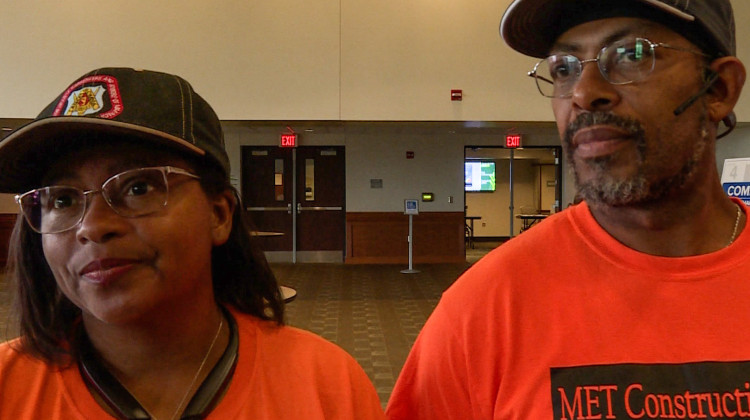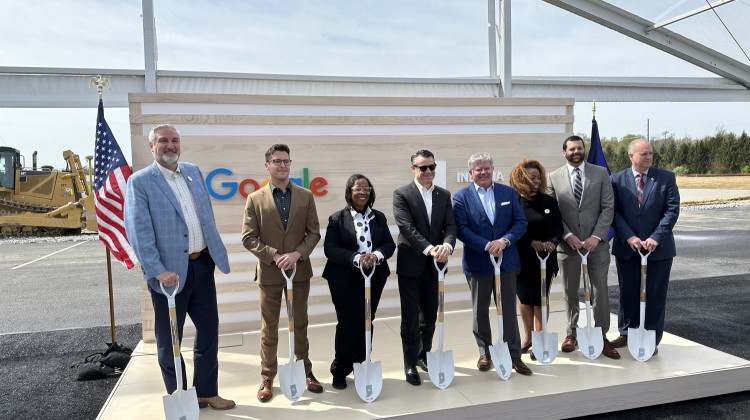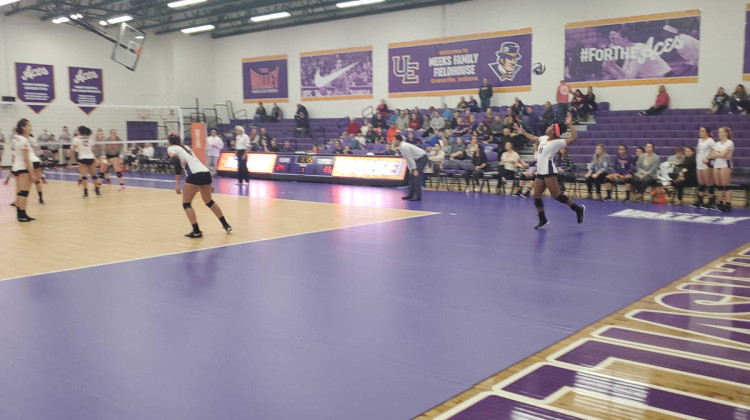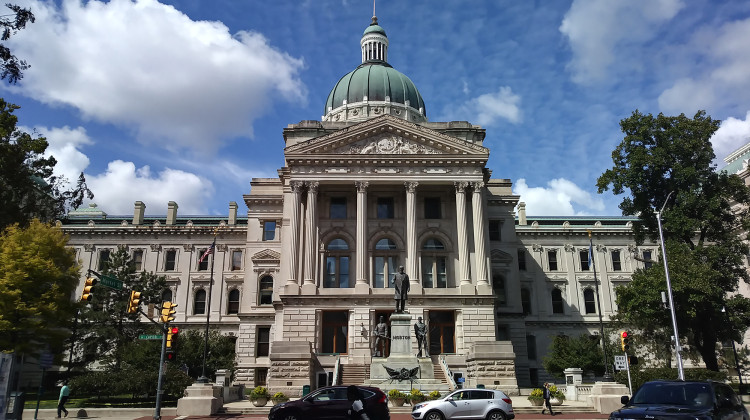
Tonia Miller and Mario Thomas co-own MET Construction, LLC. Thomas has concerns the small business may not get contracts for the EV charging bids because he said it seems to favor larger companies.
Rebecca Thiele/IPB NewsEnvironmental justice advocates and the Indiana Department of Transportation are working to reach middle ground on equity concerns over an electric vehicle charging program.
The federal program aims to set up charging stations along interstates and other major highways to encourage EV adoption.
At least 40 percent of the benefits of the program are supposed to go to disadvantaged communities. But the Biden administration never singled out race requirements — so several of the disadvantaged communities identified in Indiana are predominantly White, rural areas.
Environmental justice advocates worry that could leave out Black and Brown communities that are more likely to live along state highways and suffer from pollution.
They also want Indiana’s Black-owned businesses get a chance to benefit too. Mario Thomas co-owns MET Construction, LLC. He worries the bid packages are just too big for smaller businesses like his.
“They’re requiring that you control the land, that you’re able to bring in all of your own materials, your own crews. And if these bigger companies are able to do that all in-house, there’s no incentive for them to reach out to the community," Thomas said.
INDOT said private entities that aim to partner with small or minority businesses will be more likely to be awarded contracts. But even if they do, Thomas worries workers from those businesses won’t be put on the job in the end.
An Indiana utilities group already got the bid to build out chargers as part of a legal settlement with Volkswagen.
READ MORE: Electric vehicle stakeholders discuss access, state of EV infrastructure
Join the conversation and sign up for the Indiana Two-Way. Text "Indiana" to 73224. Your comments and questions in response to our weekly text help us find the answers you need on statewide issues, including this series on climate change and solutions.
INDOT has made separate maps showing communities the federal government considers disadvantaged, communities with more Black residents, and those with more diversity overall. Denise Abdul-Rahman is the environmental and climate justice chair for the Indiana State Conference of the NAACP and part of the Indiana Alliance for Equity, Diversity and Inclusion for Electric Vehicle Infrastructure and Economic Opportunities.
Abdul-Rahman said it would be good to have a map of lower-income census tracts and overlays to see how all of those maps interact — something INDOT said they plan to make.
“To really see, yes, can our communities benefit? Are they going to be in close proximity? Can they get the jobs? And so on and so forth," she said.
Abdul-Rahman said INDOT has made this round of meetings more accessible to the public — particularly residents in urban areas. Though she would like to see more of these meetings held at minority business enterprises.
INDOT is asking environmental justice advocates to help the agency set benchmarks to ensure disadvantaged communities have access to EV chargers.
More charging stations could be placed near Indiana's borders
INDOT has proposed another seven highway corridors for the DC fast chargers. That includes parts of U.S. Highway 30 in northern Indiana, U.S. 50 in southern Indiana, U.S. 36 and 40 in Indianapolis, and the Lloyd Expressway in Evansville.
Diane Newton is with HNTB — a firm that designs transportation infrastructure that’s helping to manage the program in Indiana. She said some of these will help to make sure EV drivers can feel comfortable across state lines.
“When you get into southeastern Illinois — when we were coordinating with Illinois DOT, they expressed concern that they had charging deserts in the south east portion of their state. So we felt like U.S. 41 really helped to fill the gap there," Newton said.
Newton said some of the corridors will also ensure charging near the Indianapolis airport and along highways with heavy truck traffic.
Rebecca is our energy and environment reporter. Contact her at rthiele@iu.edu or follow her on Twitter at @beckythiele.
9(MDAyMzk1MzA4MDE2MjY3OTY1MjM5ZDJjYQ000))
 DONATE
DONATE








 View More Programs
View More Programs

 Support WFYI. We can't do it without you.
Support WFYI. We can't do it without you.